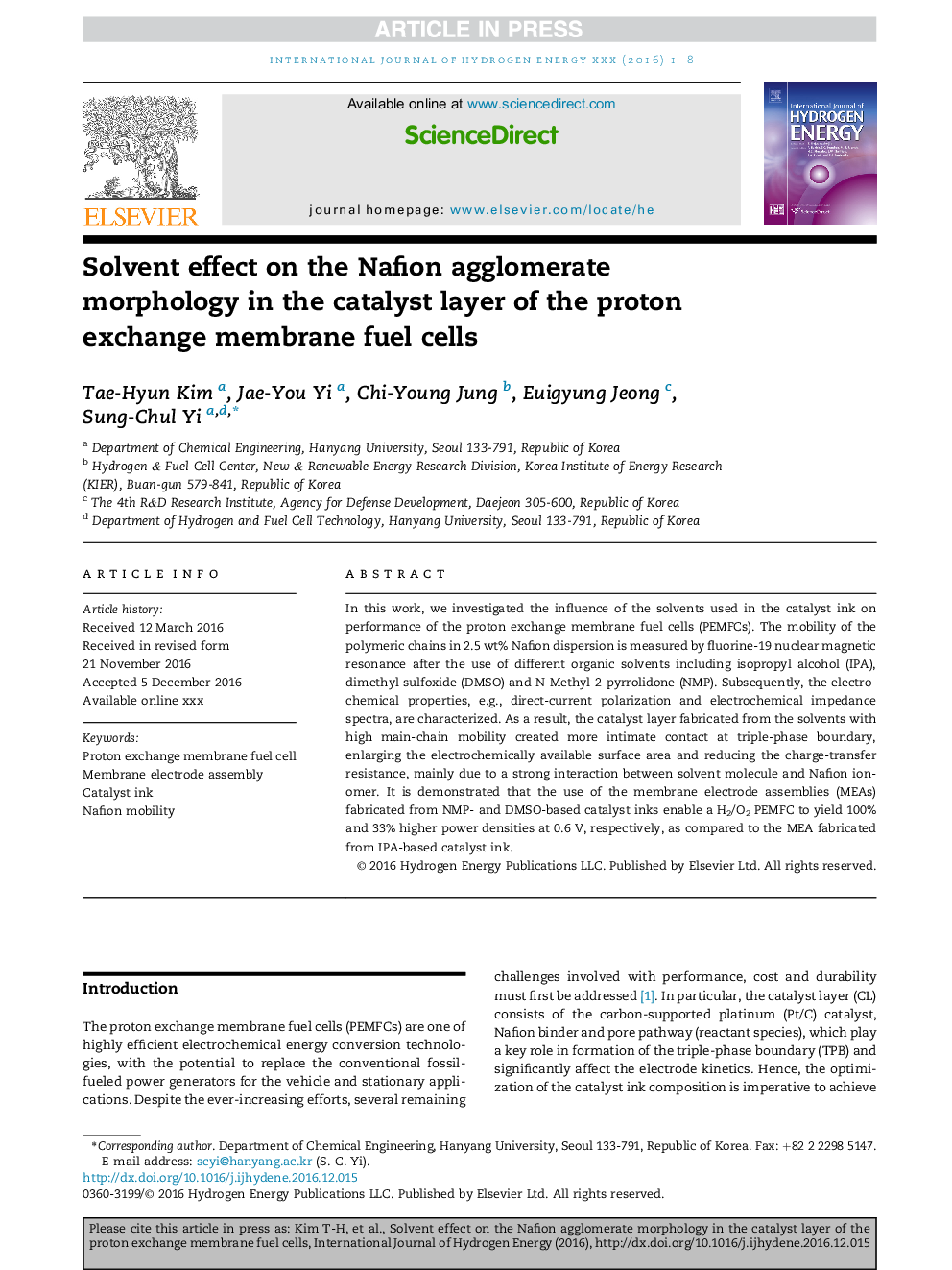| Article ID | Journal | Published Year | Pages | File Type |
|---|---|---|---|---|
| 5148103 | International Journal of Hydrogen Energy | 2017 | 8 Pages |
Abstract
In this work, we investigated the influence of the solvents used in the catalyst ink on performance of the proton exchange membrane fuel cells (PEMFCs). The mobility of the polymeric chains in 2.5Â wt% Nafion dispersion is measured by fluorine-19 nuclear magnetic resonance after the use of different organic solvents including isopropyl alcohol (IPA), dimethyl sulfoxide (DMSO) and N-Methyl-2-pyrrolidone (NMP). Subsequently, the electrochemical properties, e.g., direct-current polarization and electrochemical impedance spectra, are characterized. As a result, the catalyst layer fabricated from the solvents with high main-chain mobility created more intimate contact at triple-phase boundary, enlarging the electrochemically available surface area and reducing the charge-transfer resistance, mainly due to a strong interaction between solvent molecule and Nafion ionomer. It is demonstrated that the use of the membrane electrode assemblies (MEAs) fabricated from NMP- and DMSO-based catalyst inks enable a H2/O2 PEMFC to yield 100% and 33% higher power densities at 0.6Â V, respectively, as compared to the MEA fabricated from IPA-based catalyst ink.
Related Topics
Physical Sciences and Engineering
Chemistry
Electrochemistry
Authors
Tae-Hyun Kim, Jae-You Yi, Chi-Young Jung, Euigyung Jeong, Sung-Chul Yi,
